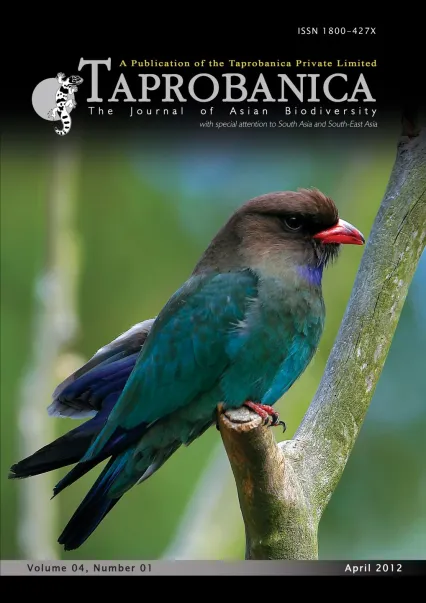

v4i1.66
Volume 4 | Number 1 | May 2012
Short Note
ISSN: 1800-427X (print)
eISSN: 1800-427X (online)
DOI:10.47605/tapro.v4i1.66
Submitted date: 7 March 2012
Accepted date: 16 March 2012
Published date: 28 May 2012
Pp. 52–53.
First record of the blue sea slug (Glaucus atlanticus) from Andhra Pradesh – India
Bhargavi Srinivasulu*, C. Srinivasulu & G. Chethan Kumar
*E-mail: bharisrini@osmaniawildlife.org
The blue sea slug Glaucus atlanticus Forster, 1777 (Gastropoda, Glaucidae) is a nudibranch that occurs in temperate and tropical oceans throughout the world. It is characterized by a silvery white dorsal surface and dark blue ventral surface. The body is elongate measuring up to 3 cm and is flattened. The head is small and blunt with a pair of small oral tentacles near the mouth. The cerata or papillae are wing-like and extend laterally from three distinct pairs of peduncles. The papillae are placed in a single row (uniseriate) and may be 84 in total. A similar looking glaucid nudibranch, Glaucus marginata (Bergh, 1860), is a bluish-brown nudibranch with bluish underside, and differs from Glaucus atlanticus in bearing four pairs of clusters of papillae that are arranged in more than one row (multiseriate) and may be 139 or more in number. The latter species has been included by some authorities under the genus Glaucilla Bergh, 1860. Presently, both species are listed under Glaucus Poli, 1795.
Section Editor: Brenden Holland
eISSN: 1800-427X (online)
DOI:10.47605/tapro.v4i1.66
Submitted date: 7 March 2012
Accepted date: 16 March 2012
Published date: 28 May 2012
Pp. 52–53.
First record of the blue sea slug (Glaucus atlanticus) from Andhra Pradesh – India
Bhargavi Srinivasulu*, C. Srinivasulu & G. Chethan Kumar
*E-mail: bharisrini@osmaniawildlife.org
The blue sea slug Glaucus atlanticus Forster, 1777 (Gastropoda, Glaucidae) is a nudibranch that occurs in temperate and tropical oceans throughout the world. It is characterized by a silvery white dorsal surface and dark blue ventral surface. The body is elongate measuring up to 3 cm and is flattened. The head is small and blunt with a pair of small oral tentacles near the mouth. The cerata or papillae are wing-like and extend laterally from three distinct pairs of peduncles. The papillae are placed in a single row (uniseriate) and may be 84 in total. A similar looking glaucid nudibranch, Glaucus marginata (Bergh, 1860), is a bluish-brown nudibranch with bluish underside, and differs from Glaucus atlanticus in bearing four pairs of clusters of papillae that are arranged in more than one row (multiseriate) and may be 139 or more in number. The latter species has been included by some authorities under the genus Glaucilla Bergh, 1860. Presently, both species are listed under Glaucus Poli, 1795.
Section Editor: Brenden Holland
- List of Articles & Contents





